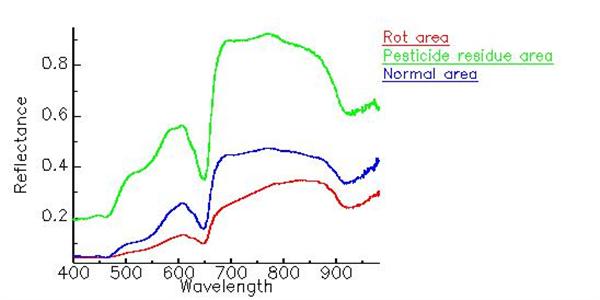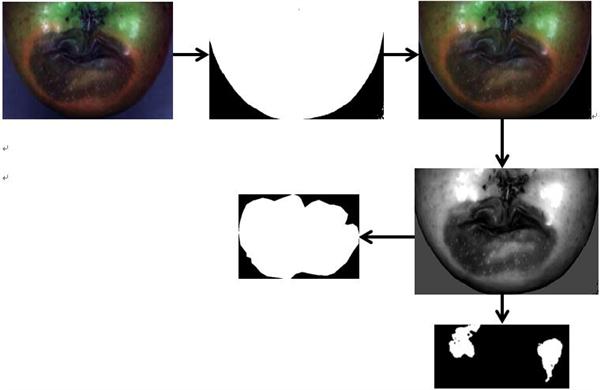With the improvement of people's living standards, consumers are paying more and more attention to the quality and safety of fruits and vegetables. Fruit damage not only causes the decay of fruits and vegetables but also seriously affects the health of consumers. Therefore, rapid and effective detection of fruit damage is very practical. Although the damaged areas of fruits may appear similar to normal regions in external features, there are subtle changes in their spectral characteristics at specific wavelengths. These differences can be captured and analyzed using advanced imaging techniques.
Hyperspectral image technology combines the advantages of spectral analysis and image processing to detect and analyze both internal and external quality characteristics of objects. In this study, hyperspectral imaging was used to detect damaged areas on apples, aiming to develop a reliable method for identifying such damage effectively.
**2. Test Materials and Methods**
**2.1 Experimental Materials**
In this research, apples were selected as the test subjects, focusing on naturally occurring decayed areas. The goal was to analyze these areas and compare them with healthy parts of the apple.
**2.2 Experimental Equipment**
The hyperspectral imaging data was collected using the GaiaSorter system from Sichuan Shuangli Hepu Technology Co., Ltd. This system includes a hyperspectral imager (V10E), a CCD camera, a light source, a black box, and a computer. The system parameters are listed in Table 1.
| Serial Number | Item | Parameter |
|---------------|--------------------|-----------------|
| 1 | Spectral scanning range | 350–1000 nm |
| 2 | Spectral resolution | 2.8 nm |
| 3 | Collection interval | 1.9 nm |
| 4 | Number of spectral channels | 520 |
Figure 1 shows the structure and real image of the GaiaSorter hyperspectral sorting system.
**2.3 Image Processing and Analysis**
Hyperspectral data was preprocessed using SpecView and ENVI/IDL software. The process included mirror transformation and black-and-white frame calibration. After preprocessing, further analysis was conducted using ENVI/IDL to extract meaningful information from the data.
**3. Results and Discussion**
**3.1 Spectral Analysis of Apple Decay and Normal Areas**
A total of 200 pixels from the decayed area and the normal area of the apple were selected. The average reflectance spectra were calculated and plotted in Figure 2. The red line represents the spectral reflectance of the decayed area, blue represents the normal area, and green represents the pesticide residue area. It was observed that the pesticide residue area had the highest reflectance in the 400–1000 nm range, followed by the normal area, and then the decayed area. All three regions showed a peak at 610 nm, a valley at 650 nm, and a steep slope between 650–680 nm. These features are considered unique to apples and could serve as a reference for future studies.

**3.2 Extraction of Apple Rot Area**
By analyzing the spectral differences between the apple and background areas, a calibrated hyperspectral image was used to create a pure apple image through band calculation. Principal component analysis was applied to the image, and the second principal component (PC2) was selected for distinguishing the decayed area from the normal one. Threshold segmentation was then used to isolate the decayed region. As shown in Figure 3, the large portion represents the decayed area, while the smaller part corresponds to the pesticide residue area.

**3.5 Discussion**
The application of hyperspectral imaging technology in detecting fruit surface damage has demonstrated its effectiveness in "mapping integration." Subtle damages often occur beneath the skin, making them difficult to detect with the naked eye. Over time, these areas may turn brown and eventually lead to full rot, affecting other fruits. The results of this study show that using hyperspectral imaging combined with principal component analysis and thresholding can effectively identify fruit damage, enabling faster and more accurate detection methods. This approach has significant potential for use in quality control and food safety monitoring systems.
Fibre Optic Cable Joint Box,Outdoor Fiber Splice Box,Optical Fiber Cable Joint Box,Fusion Splice Box
Ningbo Fengwei Communication Technology Co., Ltd , https://www.fengweicommunication.com
